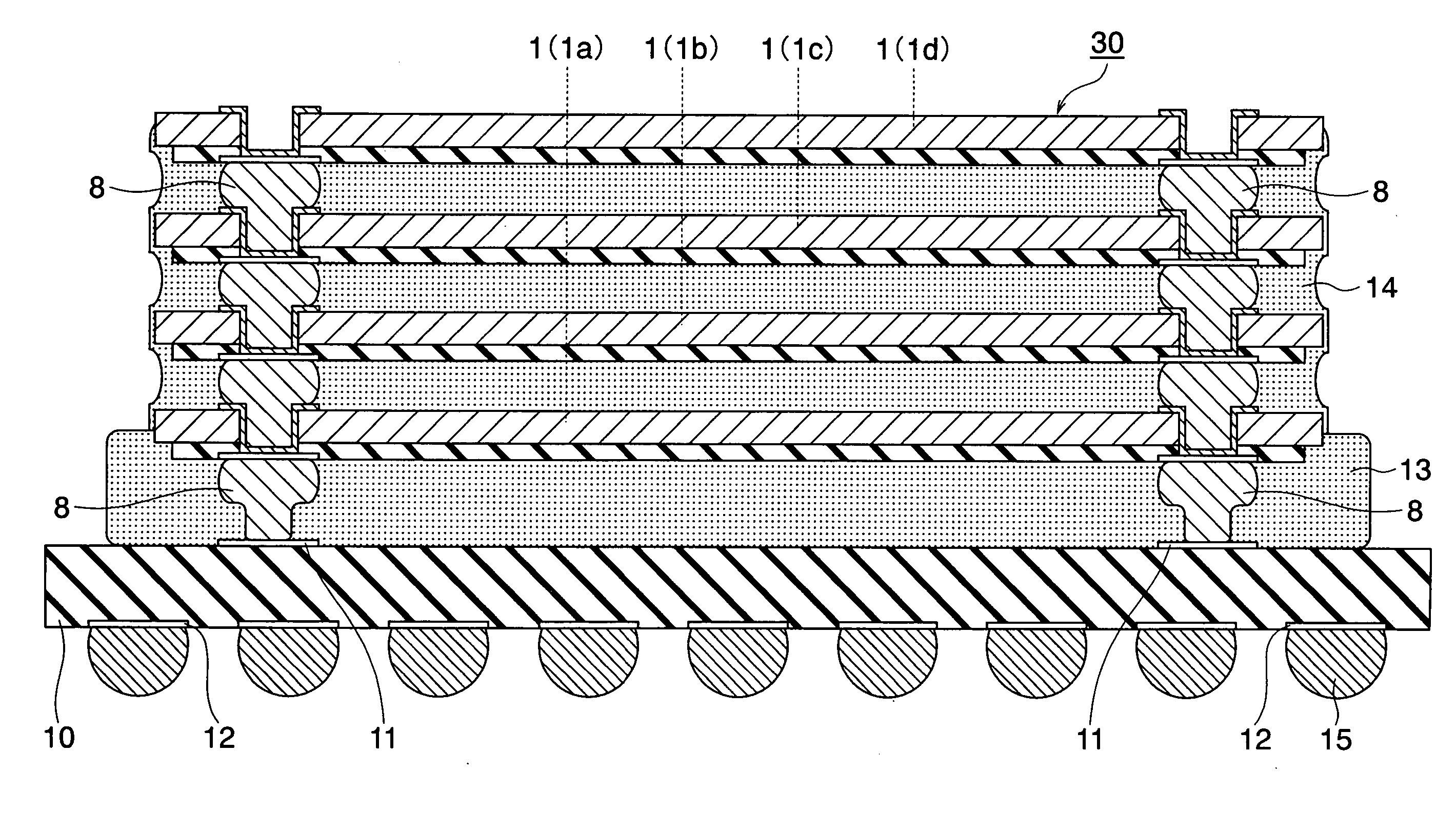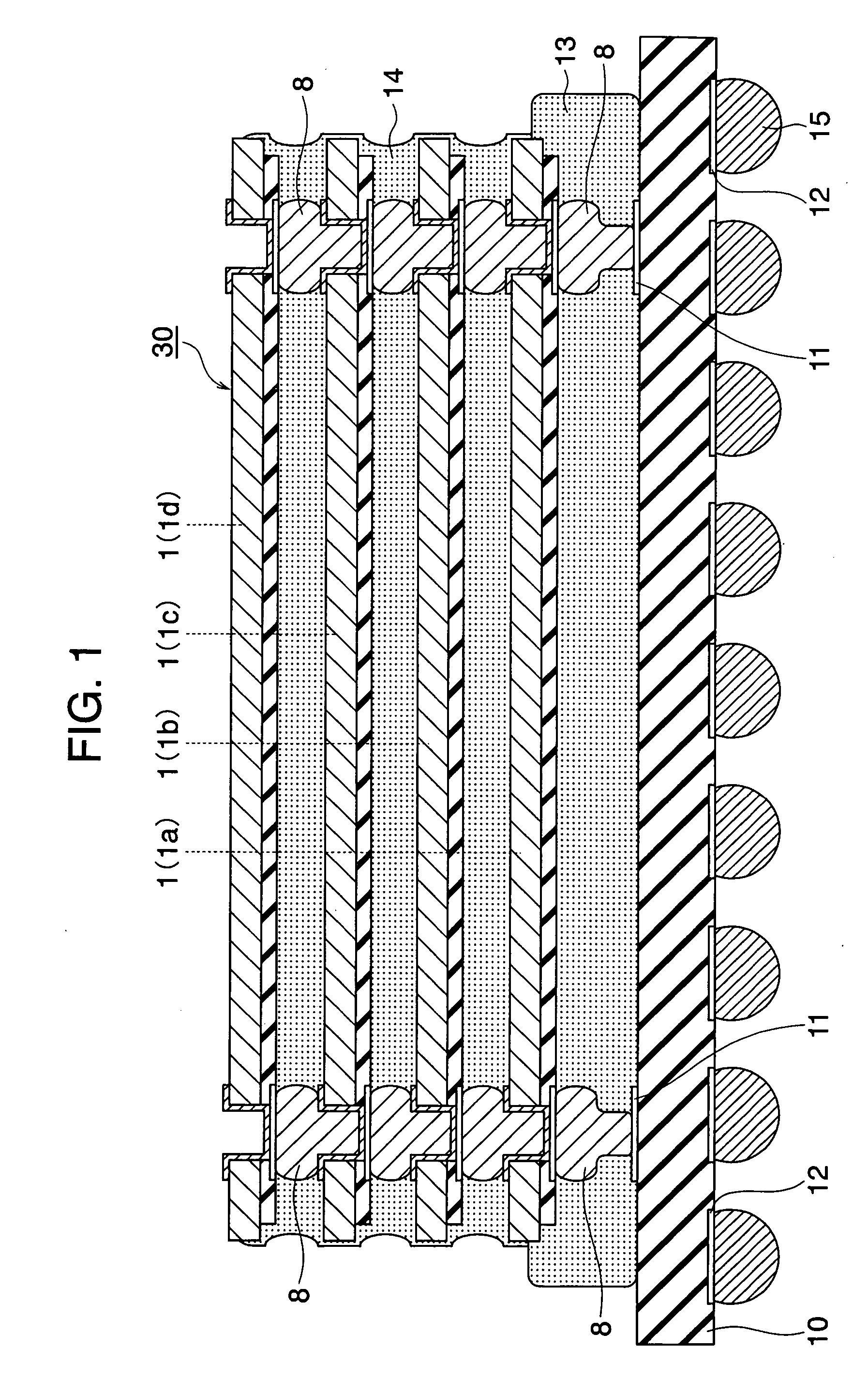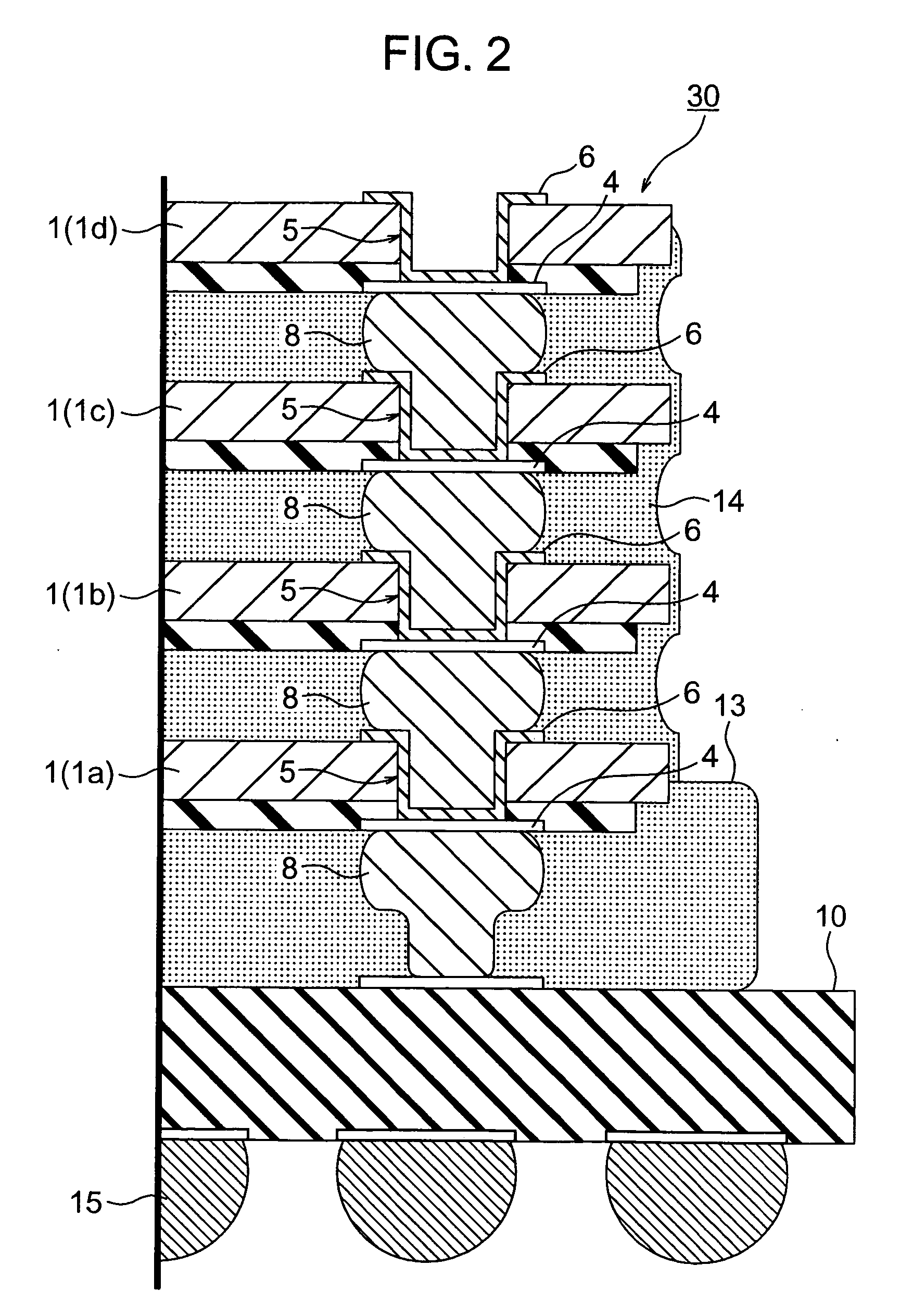Semiconductor device and manufacturing process therefor
a semiconductor and manufacturing process technology, applied in semiconductor devices, semiconductor/solid-state device details, electrical equipment, etc., can solve the problems of reducing the yield of device fabrication and tat, affecting the quality of semiconductor devices, etc., to achieve short tat, high practicability, and high reliability
- Summary
- Abstract
- Description
- Claims
- Application Information
AI Technical Summary
Benefits of technology
Problems solved by technology
Method used
Image
Examples
embodiment 1
[0054] FIGS. 1 to 14 are illustrations of a semiconductor device of embodiment 1 of the present invention.
[0055]FIG. 1 is a schematic sectional view showing a schematic configuration of the semiconductor device.
[0056]FIG. 2 is a schematic sectional view obtained by enlarging a part of FIG. 1.
[0057]FIG. 3 is a schematic sectional view showing a schematic configuration of the semiconductor chip in FIG. 1.
[0058]FIG. 4 is a schematic sectional view obtained by enlarging a part of FIG. 3.
[0059] FIGS. 5 to 10 are illustrations for explaining fabrication of a semiconductor chip in fabrication of a semiconductor device (A is a schematic top view and B is a schematic sectional view).
[0060] FIGS. 11 to 14 are schematic sectional views for explaining an assembling process in fabrication of a semiconductor device.
[0061] As shown in FIG. 1, the semiconductor device of this embodiment 1 has a package structure having a chip laminated body 30 constituted of a plurality of semiconductor chip...
embodiment 2
[0109]FIGS. 16 and 17 are schematic sectional views for explaining fabrication of a semiconductor chip in fabrication of a semiconductor device of embodiment 2 of the present invention.
[0110] As a method for covering the inner wall surface of a through-hole 5 with an insulating film 24, an example is described in which the inner-wall surface of the through-hole 5 is covered with the insulating film 24 by forming the thin insulating film 24 along the inner-wall surface of the through-hole 5 in the case of the above embodiment 1. In the case of this embodiment 2, an example is described in which the inside of the through-hole 5 is once filled with an insulating film 5 to cover the inner-wall surface of the through-hole 5 with the insulating film 24.
[0111] First, after forming the through-hole 5, the insulating film 24 made of a silicon oxide film is formed on the entire surface of the back 20y of a semiconductor wafer 20 through, for example, the plasma CVD method as shown in FIG. 1...
embodiment 3
[0115]FIG. 18 is a schematic sectional view for explaining an assembling process in fabrication of a semiconductor device of embodiment 3 of the present invention.
[0116] In the case of the above embodiment 1, an example is described in which the lowest-stage semiconductor chip 1 (1a) is mounted on the principal plane of the wiring board 10 through the adhesive 13 and then three semiconductor chips (1b, 1c, and 1d) are successively laminated on the lowest-stage semiconductor chip (1a) to form the chip lamination body 30. Thereafter, the chip lamination body 30 is mounted on the principal plane of the wiring board 10. The chip lamination body 30 is mounted by compression-bonding the chip lamination body 30 to the wiring board 10 while setting the adhesive 13 between the semiconductor chip 1 (1a) and the wiring board 10.
[0117] Also in the case of this embodiment 3, advantages same as those of the above embodiment 1 are obtained.
PUM
 Login to View More
Login to View More Abstract
Description
Claims
Application Information
 Login to View More
Login to View More - R&D
- Intellectual Property
- Life Sciences
- Materials
- Tech Scout
- Unparalleled Data Quality
- Higher Quality Content
- 60% Fewer Hallucinations
Browse by: Latest US Patents, China's latest patents, Technical Efficacy Thesaurus, Application Domain, Technology Topic, Popular Technical Reports.
© 2025 PatSnap. All rights reserved.Legal|Privacy policy|Modern Slavery Act Transparency Statement|Sitemap|About US| Contact US: help@patsnap.com



